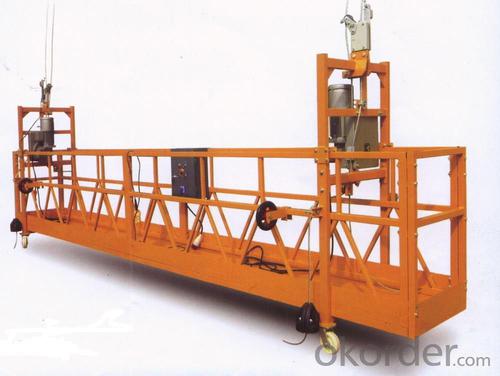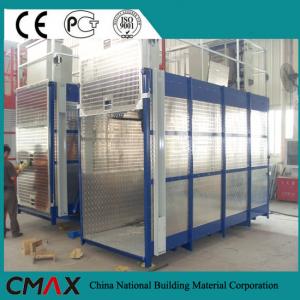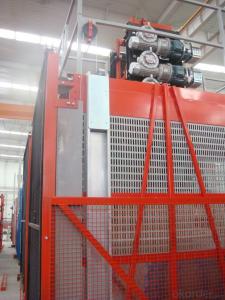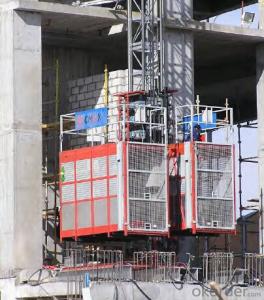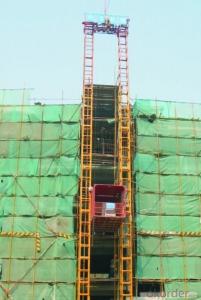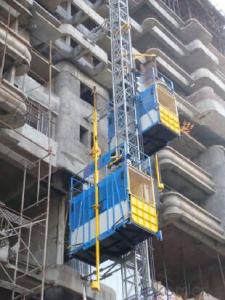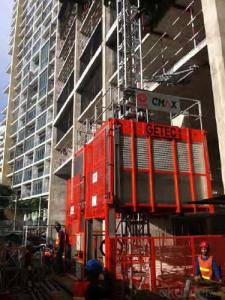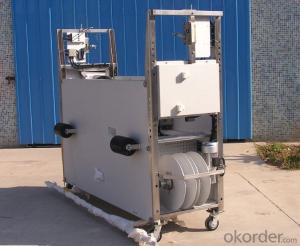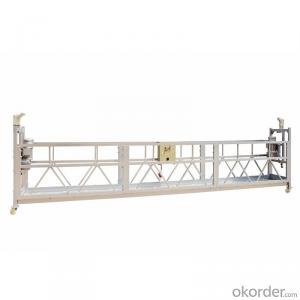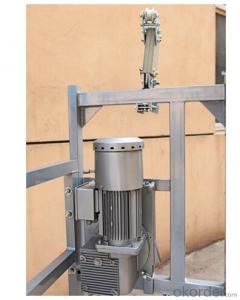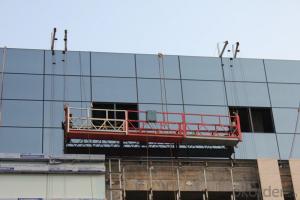Suspended Platform ZLP630
- Loading Port:
- China Main Port
- Payment Terms:
- TT or L/C
- Min Order Qty:
- 1 Set m.t.
- Supply Capability:
- 300Sets Per Month m.t./month
OKorder Service Pledge
OKorder Financial Service
You Might Also Like
ZLP630 Suspended Platform
ZLP series Suspended Platform(temporarily installed suspended access equipment), is ideal equipment for building facade construction,
decoration, cleaning and maintenance. And it is also widely used in elevator installing, ship building and repairing, or in other works such as
big-size tank, bridge, embankment and chimney. ZLP series versatile knock-down platforms provides workers safer, easier and more
efficient platform access.
Specification:
ype | ZLP630 | |||
Rated Capacity | 630kg | |||
Rated Lifting Speed | 8 -10 m /min | |||
Steel Rope Diameter | 8.6mm | |||
Hoist | Type | LTD6.3 | ||
Rated Lifting Force | 6.3KN | |||
Motor | Type | YEJ 90L -4 | ||
Power | 1.5KW | |||
Voltage | 380V | |||
Frequency | 50 Hz | |||
Rotation Speed | 1420rpm | |||
Brake Torque | 15Nm | |||
Safety lock | Type | LSB30 | ||
Permission Force of Impact | 30kN | |||
Locking Cable Distance | <100mm | |||
Platform Dimension L × W × H (mm ) | 5000 × 690 × 1460
6000 × 690 × 1460
| |||
Weight of Suspension Mechanism | 375kg | |||
Counter-Weight | 800kg/900kg | |||
Weight of Lifting Part | Steel Platform | 405kg / 450kg | ||
Aluminum Platform | 260kg / 280kg | |||
* Voltage and frequency of the motor can be manufactured to meet the needs of the customer's requirements
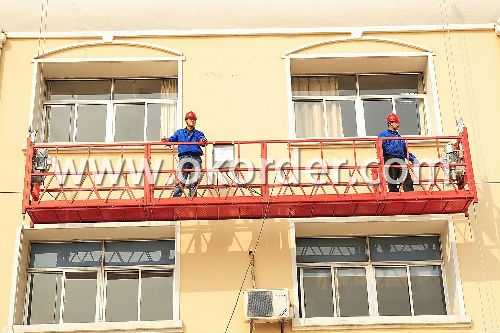
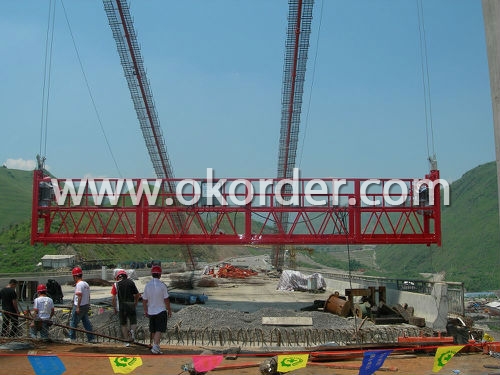
- Q: Is there any violation of the law after the construction elevator is scrapped?
- In principle, eight years; But for eight years has scrapped section standard of standard section pillar thickness wear to design thickness of 1/4 (like this value) will be scrapped or downgrade use; After eight years, the construction elevator can also be used, but the structural parts need to be broken and the test can be used again. The pendant safety device for the construction elevator is required to be tested every year for five years.
- Q: This question asks for the different types of lifting equipment that can be compatible with a building hoist.
- <p>Building hoists are commonly used in construction projects to lift materials and personnel. Compatible lifting equipment includes various types of hooks, slings, and shackles for securing loads; lifting beams for heavier or bulkier items; and specialized attachments like pallet forks for moving palletized loads. It's crucial to use lifting equipment that is rated for the weight of the load and compatible with the hoist's specifications to ensure safety and efficiency.</p>
- Q: This question asks if a building hoist can be utilized for the purpose of lifting heavy objects.
- <p>Yes, a building hoist is specifically designed for lifting heavy objects in construction settings. It is a mechanical device that can lift and lower materials such as concrete, bricks, and tools to various levels of a building under construction. Building hoists are engineered to handle substantial weight and are equipped with safety features to ensure secure and efficient operation. However, it is crucial to adhere to the hoist's weight capacity and safety guidelines to prevent accidents and ensure the proper use of the equipment.</p>
- Q: What are the primary parts that make up a building hoist system?
- <p>The main components of a building hoist include the hoist machine, which is the driving mechanism; the hoist shaft, a vertical structure that houses the hoist; the lifting platform or cage, which carries materials and personnel; the mast or tower, providing support and stability; the counterweight, which balances the load; safety devices such as limit switches and brakes; the control system for operation; and the electrical system that powers the hoist. Additionally, there are guide rails, cables, and buffers that ensure smooth and safe operation.</p>
- Q: Is the elevator detail a construction plan? Do you have a detailed picture of the elevator?
- The construction diagram of the elevator appears to be a qualified elevator construction unit
- Q: What is the height of protecting door protection of construction elevator
- Currently tunnel door is no national standard, the only industry standards and enterprise standards, is important when choosing the tunnel door manufacturers see manufacturers have tunnel door production qualification and testing report. Formal manufacturer all have these qualifications, such as lei Chen group, tunnel protection door, explosion-proof door the qualification is very complete, you can be important consideration.
- Q: Do the elevator need to be installed when the main project is in construction
- In the construction of the main body, the construction elevator should be installed. The general construction is about 15 meters. The construction elevator is commonly called the construction elevator, but the construction elevator includes a broader definition and the construction platform belongs to the construction elevator series. Simple construction elevator is by car, driving mechanism, standard section, attached to the wall, chassis, fence, electrical system and so on several parts, manned cargo construction machinery is a frequently used in construction, because of its unique enclosure structure make it take up both comfort and safety, construction elevator is usually used with tower crane on the construction site, the average load in 1-3 tons, running speed is 1 to 60 m/min. The construction elevator of our country is more and more mature, and gradually goes to the international. 3, building main body engineering means based on the above foundation, accept, for all the top load and construction project, maintaining structural integrity, stability and safety of bearing structure system.
- Q: This question asks whether a building hoist can be utilized in both indoor and outdoor environments.
- <p>A building hoist can indeed be used both indoors and outdoors, depending on the specific model and design. Outdoor hoists are typically built to withstand weather conditions and are more robust, while indoor hoists are designed for controlled environments. It's crucial to ensure that the hoist is suitable for the intended environment to maintain safety and functionality. Always follow the manufacturer's guidelines and safety regulations when using a building hoist in any setting.</p>
- Q: What is the main function of elevator motherboard?
- A control system includes light, machine, electric, calculate, calculate the mainboard is mainly responsible for, the equivalent of the human brain, it gathers the elevator running status, corresponding analog signal output, control of elevator running properly and safely.
- Q: This question asks for the cost of a building hoist, which is a type of construction equipment used for lifting materials.
- <p>The cost of a building hoist can vary significantly depending on factors such as the hoist's capacity, type, and features. On average, a basic building hoist can cost anywhere from $10,000 to $50,000. However, for more advanced models with higher capacities or additional safety features, the price can range from $100,000 to $200,000 or even more. It's important to consider the specific needs of your construction project and consult with equipment suppliers for accurate pricing.</p>
Send your message to us
Suspended Platform ZLP630
- Loading Port:
- China Main Port
- Payment Terms:
- TT or L/C
- Min Order Qty:
- 1 Set m.t.
- Supply Capability:
- 300Sets Per Month m.t./month
OKorder Service Pledge
OKorder Financial Service
Similar products
Hot products
Hot Searches
Related keywords



